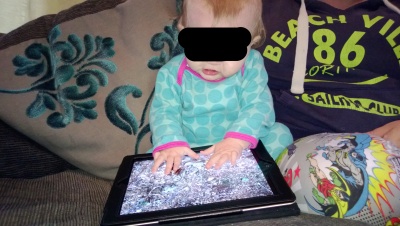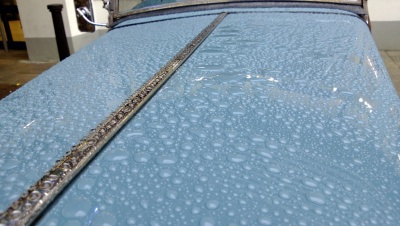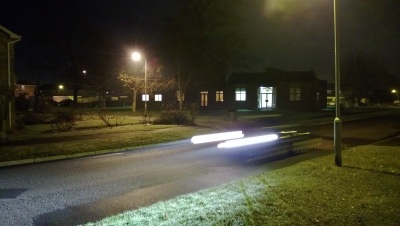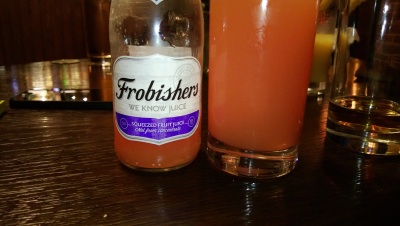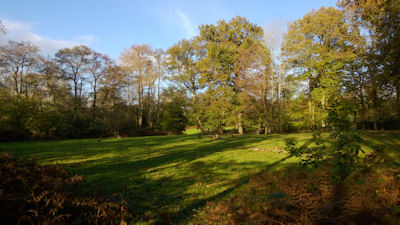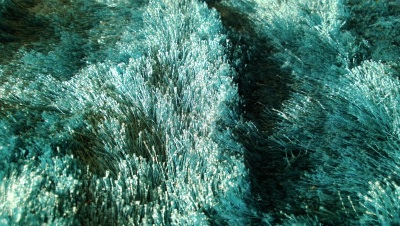Review: Nokia Lumia 920 - part 2a - stills camera
In part 1 of our Nokia Lumia 920 review, Rafe presented a definitive look at the device's hardware, including an introduction to one of its unique selling points, the optically stabilised 'PureView'-branded camera. In this, review part 2a, I test the Lumia 920 stills camera over a wider range of conditions and critically assess its performance. Review part 2b will cover video capture to the same degree.

As Rafe noted in the first review part (some of whose example images I also include - and assess -below):
The Lumia 920 is second Nokia's second device with a PureView branded camera, following on from the Symbian-powered Nokia 808 PureView that was released earlier this year. As with PureMotion, PureView is a quality mark, promising consumers a top quality camera experience.
However, the Lumia 920 takes a very different approach to the 808 PureView. The latter combined a huge physical sensor (1/1.2") and a 41 megapixel array to do stunning "software photography", with noise-reducing pixel oversampling and lossless zoom options. This required a large camera module, which resulted in a thicker device, with an out-sized camera hump. There's no way this approach could be repeated while maintaining the relatively sleek lines of the Lumia series.
Instead, the Nokia Lumia 920 is based around a 1/3" sensor, something that's fairly standard for a high-end smartphone, but coupled with optical image stabilisation (OIS) and advanced processing algorithms. The key technical characteristics of the Lumia 920's camera are a Backside Illuminated (BSI) 8.7 megapixel sensor, with a F2.0 aperture, Carl Zeiss optics and a "floating lens" optical image stabilisation system, plus a short-pulse-high-power LED flash.
The image stabilisation system in the Lumia 920 works by moving the entire optical assembly, based on closed loop electronics and gyroscope input, up to 500 times a second. The aim is to compensate for any inadvertent movement by the user.
For still images, this means less images ruined by "camera shake", and, because longer shutter times can be used, dramatically better low light photos.
We've also published a preliminary camera comparison between the Nokia Lumia 920, Nokia 808 PureView, Nokia Lumia 900, and HTC One X, with particular emphasis on low light shots, and not surprisingly the Lumia 920 came in ahead of its 1/3"-sensored rival, the One X. Notably, though, it couldn't displace the 808 PureView, despite the weighting of the tests in the Windows Phone's favour.
At which point I'd like to dispense with the elephant in the room, in order that we can get on with the rest of the review. Across all lighting conditions and use cases, the cameras in the Symbian-powered Nokia N8 and 808 PureView are superior, by quite a way, to that in the Lumia 920. Which isn't surprising - both have much larger sensors (1/1.8" and 1/1.2" respectively) and have the huge advantage of a real (Xenon) camera flash for indoor shots and freezing moving subjects. I'll have a direct comparison here shortly on All About Symbian, for those interested. But, with the best will in the world, Symbian as an OS isn't going to win many hearts and minds in the phone world in 2013, so I'll overlook these other two 'outlying' devices here.
But that said, my test photos for the comparisons were taken by me, with an experienced, steady hand. The removal of camera shake in the Lumia 920 is likely to be of much higher benefit to the new, novice user. So yes, it's 'PureView', as in high technical effort has been applied to try and create better imaging, but the benefits here aren't for the hardened camera phone fan, they're for the newcomer, the less experienced. Rafe agreed:
What is noticeable, regardless of the conditions, is that the Lumia 920 is generally a more forgiving cameraphone than most of its competitors. It's actually quite hard to take a bad picture, with a lower incidence of blurred and out of focus images. Power users, who are well aware of the need to keep a cameraphone as still as possible when taking images, won't notice this as much, but it's going to be a real boon for the average user.
On to the review and analysis, then. Here's our example image gallery from the Lumia 920, shot in an extremely wide variety of conditions and scenarios. In each case there's my analysis, along with selective crops where needed, one from each pair of examples:
A lovely sunny country house shot here, with a wealth of detail - there's evidence of plenty of edge enhancement, but with so much detail being strived for, the processing works quite well here, certainly when the photo is viewed on a TV or computer monitor at moderate size. You have to go right down to the pixel level before things get ugly. The train scene, right, is again pretty darned good for a 1/3"-sensored camera, with excellent colours, minimal sunshine blowout and with edge enhancement remaining within acceptable bounds. Here's a crop from the centre:
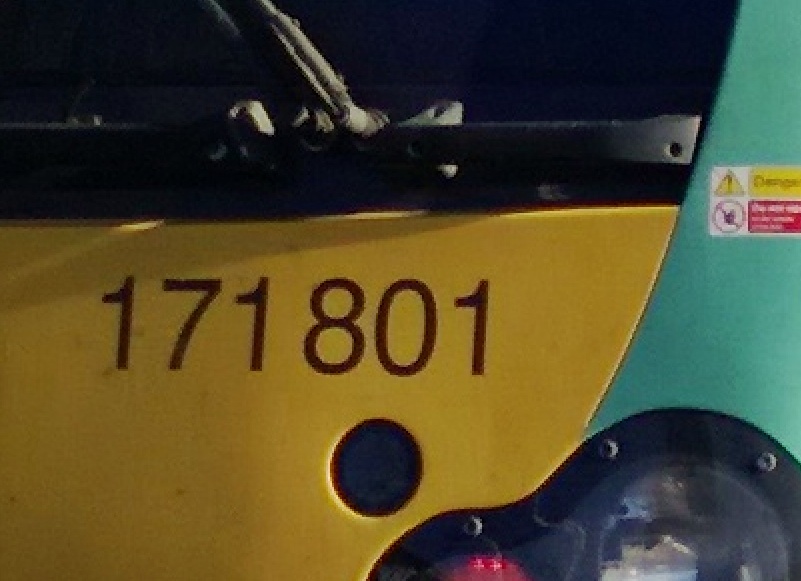
We're being picky here, but we'd still like the edge processing dialled back a bit - witness the artefacts around the train numbers. Still, overall, a very pleasing photo result from the Lumia 920.
NB. Faces are blocked here for obvious privacy reasons. Things get trickier here, with murky lighting (left), shooting in the rain and with a human (i.e. moving!) subject. Looking at the crop below, the exposure and colours are pretty decent and my main complaints would be the slight jagged artefacts on high contrast edges, such as the top surface of the pink gloves, plus the combined effects of noise reduction and edge enhancement on the girl's face give a soft focus effect. I'd have liked a little more natural crispness, i.e. the raw image before the processing. Right, the low light LED flash shot has come out very well, with even the baby's face coming out without too much motion blur. Note that the baby isn't plunging their hands into broken glass - the effect is the low shutter speed used by the Lumia 920 merging content from the 'fake pond' application on the iPad!
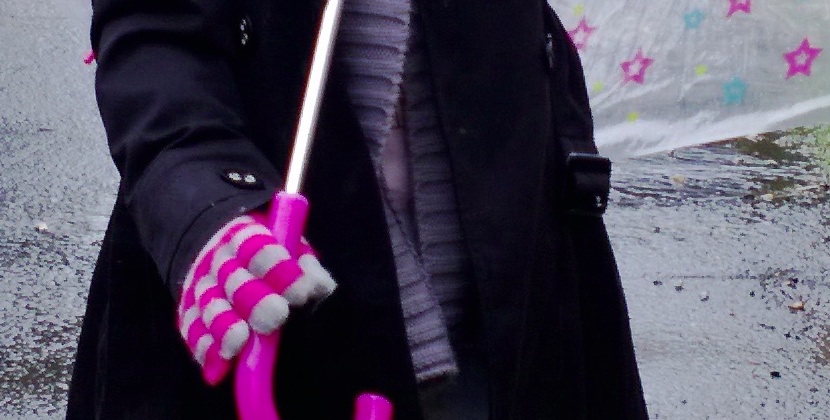
Despite my reservations, the average user will be very happy with this sort of shot, I think. Certainly the emphasis on edge enhancement is common to the Sony and HTC phone cameras, for example, and is geared more for small screen clarity rather than semi-pro photographer satisfaction (as was the case on the Nokia N8 - and, to some extent, the Nokia 808 PureView).
Oh very arty - raindrops on a highly polished car bonnet, photographed in murky light but you wouldn't know it from the clear shot here from the Lumia 920, cropped to show detail below. The OIS continues to work well though and even though the shots on this page are all handheld, there's no camera shake evident - at all. Right, taking OIS to the limit, a handheld shot in very dark conditions (a lot darker than it looks), timed deliberately for when a car was passing, to show the slow shutter time (1/3rd of a second seems to be the Lumia 920's maximum) - the car is reduced to a complete blur while the overall scene is very clear despite the shot being handheld and without any care or attention (i.e. I wasn't resting the Lumia on anything).
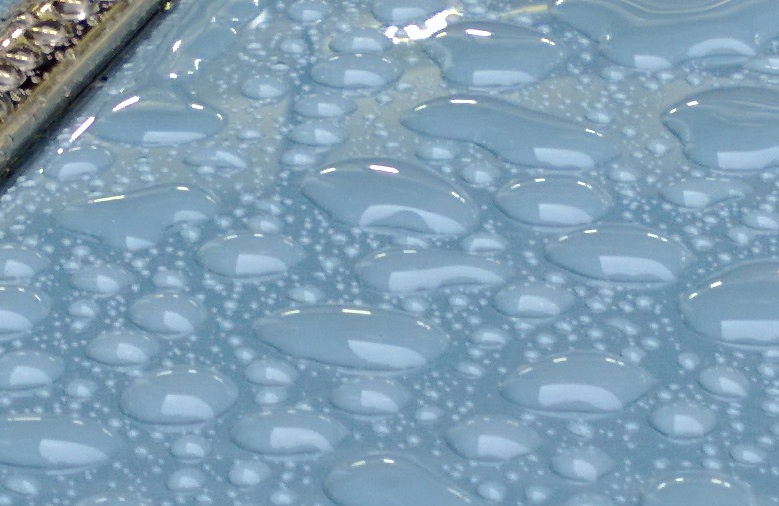
Tuning image processing in a camera phone is always a compromise - the parameters in the Lumia 920's software work out well for the drops on the blue bonnet, where there's little contrast, but seem over the top for the high contrast drops on the chrome. As I say, tough to get right - personally, I'd always favour a completely natural look, but you have to remember that things aren't that natural down at the pixel level on such a small camera sensor - in order to produce a noise-free 8 megapixel image from a 1/3" sensor, some processing is bound to be needed.
Here I'm trying to show the difference between proper camera flash (Xenon-based, roughly 10 microseconds) and LED flash (typically a few milliseconds), I was snapped on the Lumia 920 raising my beer to say 'cheers!', i.e. a typical human subject in motion. It's a common scenario and one which the OIS is powerless to address, along with every other competing smartphone - my face is a blurry mess. Event shots like this are only really possible on phone cameras if there's Xenon - I refer you to my usual Xenon rant and my hope that one day manufacturers will come back to this technology. Certainly the 920's shot here is better than would be expected from a HTC One X or iPhone 5 - the OIS at least gets rid of camera shake at the user end. On the right, an archetypal low light shot in a pub car park. Note that the doubled/shadowed letters in the pub name are like that in real life - it's not a photo artefact! Here's a crop from the overall shot:
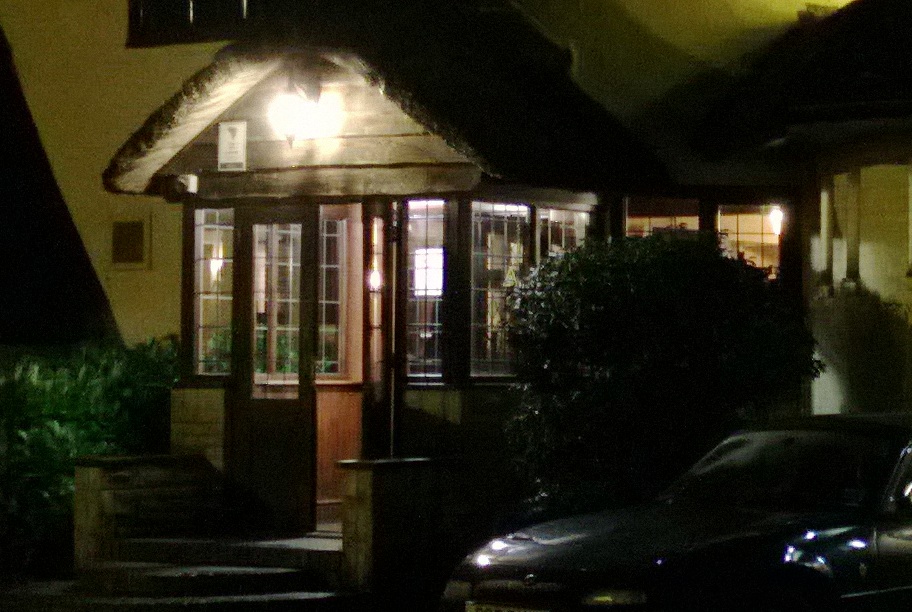
Again I have to emphasise that the photo (crop) above was taken handheld in very low light, with no special bracing, let alone a tripod. The OIS really does work. Yes, there's noise in the photo, but considering how few photons of light would be hitting each sensor pixel, that's not surprising. This scenario is, without question, the Lumia 920's true comfort zone.
A few more examples. The 'elf'(!, see, they do exist...) above was taken in bright indoor (shopping mall) lighting and came out rather well (see the crop below). Right, another low light 'pub' shot, but this time a macro and of a static subject. The LED flash was used and the result is actually stunningly good - grab the JPG original above, look at the detail on the drink label and see for yourself.

Note the gentle handling of graduations in colour on the plastic elf(!) above. Note also the very slight soft focus effect again - I'd rate the noise reduction as being slightly too aggressive here.
Here are two more examples in the sun. The flower shot has come out about as well as on any other phone I could have tried - nothing too untoward here - the average user would be very pleased, I think. The shop front/sign shot has also come out extremely well and is cropped below:

I was pleased with the Comet logo (yes, yes, the chain that's closing down in the UK) and sign superstructure all coming across fairly naturally and without undue artefacts. Maybe the fact that most of the edges were grey and not straight white on black helped? In any case, another good example of what the Lumia 920 camera can do.
Here's Rafe's classic 'pumpkin' shot in extreme low light conditions, which still impresses - the photo looks like there was some ambient light around, but in fact there was almost none - the same photo taken on the HTC One X in our comparison piece shows the reality. The sunny scene, right, has very pleasant colouration and would be fine for most people, though as an imaging purist, this is actually one of the worst photos in this test - I was struck by quite how many processing artefacts are evident once you look more closely:

Look at the tree trunk edges and the 'frizzy' mess in much of the greenery, for example. Note again that every manufacturer applies heavy image processing to photos from these small-sensored cameras, typically noise reduction followed by edge enhancement, and it's the algorithms involved and the parameters used which determine how light or how severe the final effect. I'd class the processing above as 'over-zealous'.
Before summarising, there's one issue which has reared its ugly head again in a Nokia Windows Phone handset. See the two images above. A blue carpet in a shop becomes green when snapped close-up, i.e. as a macro. I saw similar colour problems in early firmware on the Lumia 800 a year ago and these were fixed successfully in software at a later date. Having said that, this was the only scenario in my test period which showed colouration - though it was repeatable, I took half a dozen shots to confirm the issue.
Summarising the Lumia 920's stills camera performance
As you'll see from the analysis of our test shots above, despite some very impressive photos (especially those in low light), the Lumia 920's camera isn't currently quite as 'pure' as the branding would imply - we did notice occasional image processing effects, as noted above, plus the colour problem in that one example. Before writing this review part, we reached out to Nokia for comment and they said that were 'aware of these specific issues and that they were optimistic that image quality could be improved further' in the next firmware update.
On the whole though, we have been impressed with the Lumia 920's camera module, essentially competitive with the likes of that in the Android and iOS competition, the Galaxy S III and iPhone 5, but with the advantage of the OIS to help low light shots.
That the 920 can't match the 808 PureView for ultimate quality is somewhat irrelevant, in view of the relative state of the operating systems used - it's unlikely that many people would choose the 808 in 2013 unless they were already hardened Symbian (or Xenon!) fans - everybody else interested in better photos will gravitate to devices like the Lumia 920.
That the 920's output (i.e. from its camera software) in good lighting isn't yet quite up to the potential of the ground breaking miniaturised OIS system in its hardware shouldn't be seen as too much of a disappointment - results are still very good (and competitive) in most cases and there will updates aplenty throughout 2013.
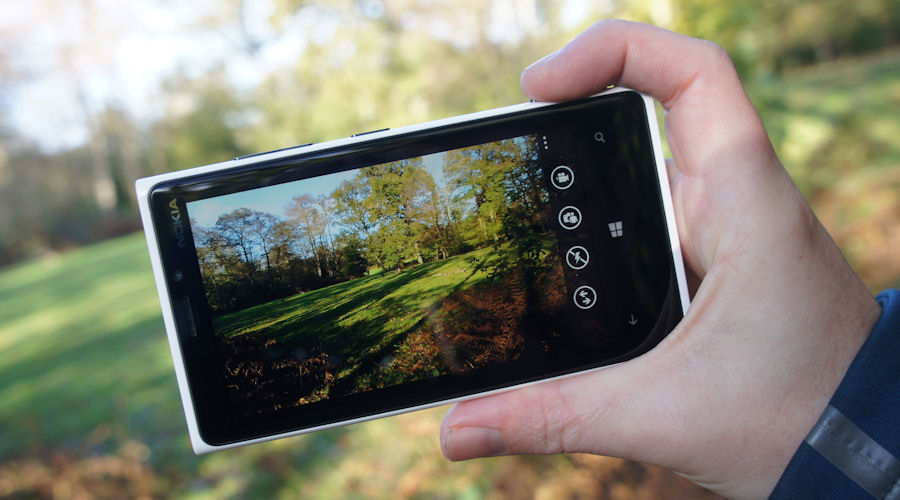
Interface notes
The Windows Phone camera interface got a slight overhaul for version 8 of the OS, with the 'Save' option for the settings now moved to a button, rather oddly written at right angles to the landscape Camera UI. There are now no on-screen zoom buttons - the user now has to pinch/splay in order to zoom out and in (the volume buttons are steadfastedly assigned to audio control).
The most annoying facets of the UI, though, are oddities to do with focussing and exposure. 'Tap to focus' (e.g. on a specific object) has been a staple of modern smartphone camera interfaces for several years, yet here a tap not only focusses, but it also takes the shot, meaning that you can't focus and then reframe.
In effect, it forces you to use the shutter button for anything ambitious, since there you can focus (by half pressing) and reframe, finally taking the shot (with a full press of the button). The most common real world frustration with the 'tap to take' system in Windows Phone 8 is when trying to photograph one's extended family - including children who never stay still for a second and my usual tactic on other phones is to get focussed on a face or person and then snap at just the right moment. This can't be done with 'Tap to take', so it's back to the shutter key again. Not a massive problem, given that I'm an old-school shutter key fan, but the behaviour here is certainly worth noting.
Along similar lines, exposure isn't locked along with focus, again rather foiling any ambitions on the part of the camera phone photographer. So, even with focus locked by judicious use of the shutter key, reframing the shot will result in exposure constantly being monitored and changed. Potentially annoying for someone wanting a particular effect.
One final oddity is that you can't currently alter the capture resolution, which remains locked at 7 megapixels (or 8, if you choose the 4:3 aspect ratio option). Not a showstopper, given that the Windows Phone OS still automatically resamples images down as it sends them out to the world (including by email, which can be annoying), but it's the first camera phone implementation I've seen for many years which didn't offer users the option of dropping to a lower resolution.
As before in Windows Phone, I loved the way you can swipe to the right to see the last image(s) taken, and then swipe back left to bring back the viewfinder - a very elegant system.
One important icon in the Camera interface here is 'lenses' (shown as two opposing arrows, the significance of which escapes me), essentially plug-ins to Camera, with Nokia providing Smart Shoot and Cinemagraph, both of which we'll cover in their own review features shortly. Third parties can supply lenses too: tapping on 'find more lenses' brings up a special section of the Windows Phone Store and there are half a dozen third party lenses on offer already.
Lenses are a nice idea and only ever one tap away, though it really pays to bear them in mind when actually lining up a shot - in the short term there will be plenty of occasions where you'll snap something and then think "Darn, I should have used such and such a lens for that" afterwards!
__________________
In the next review part, I'll be looking at the video capture capabilities of the Nokia Lumia 920 - again using the optical image stabilisation to good effect, hopefully - how much difference will it make? Look out also for Rafe's generic review of the Windows Phone 8 operating system.
Reviewed by Steve Litchfield at




